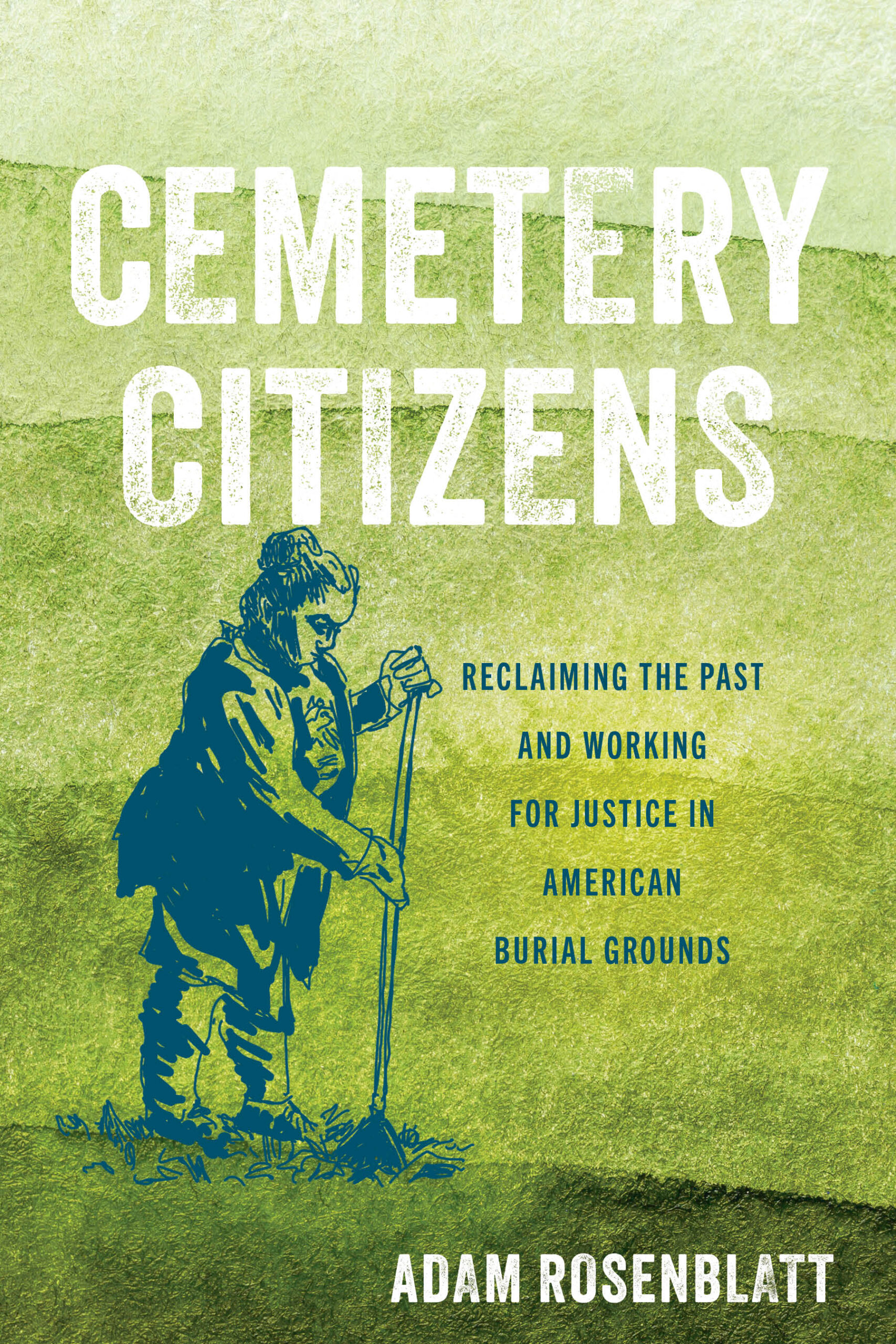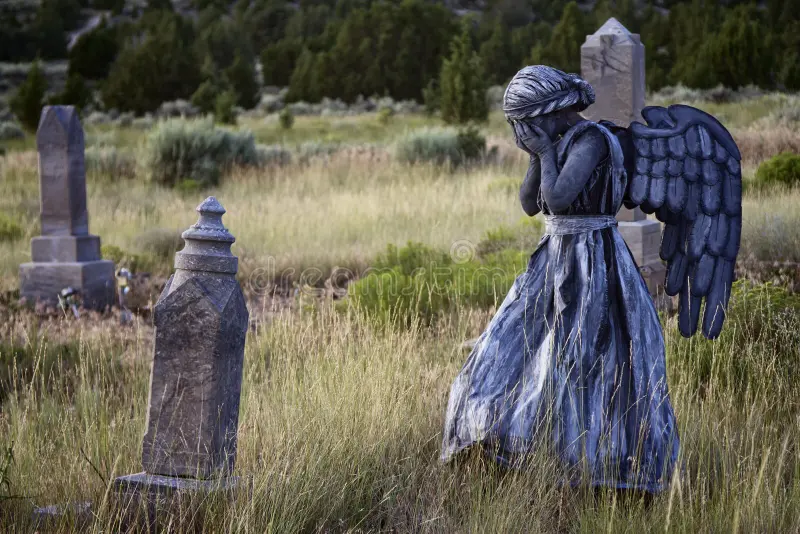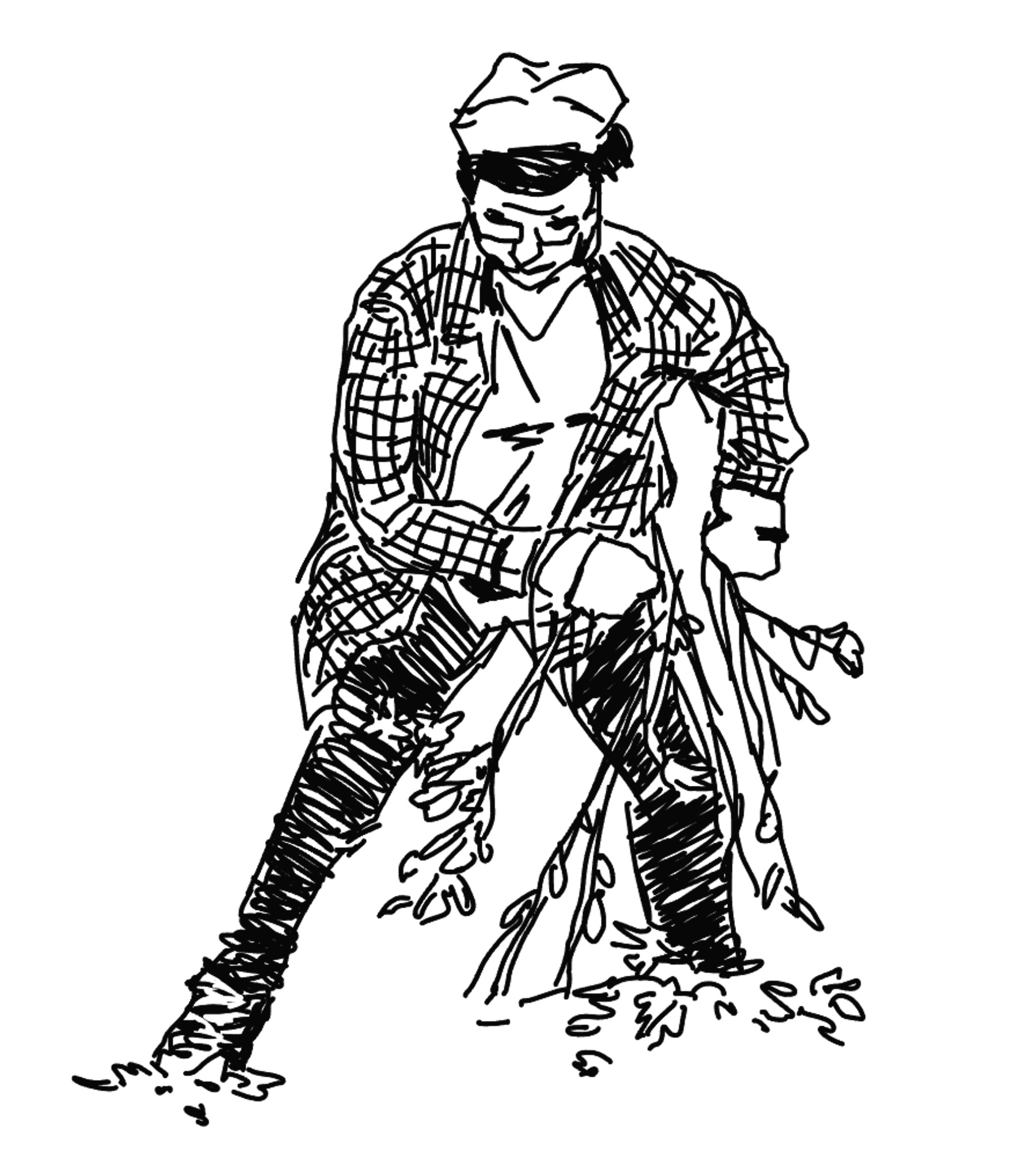Revisions to a cemetery expose, and even reshape, the relationships that living humans have with each other and with the dead. But nonhuman life is part of the process too. Chronicling the history of an African American cemetery in Oxford, Georgia, Mark Auslander writes:
In 1990, an unscrupulous, politically well-connected pulpwood merchant clear cut the oldest part of the black cemetery, taking out hundreds of pines and destroying scores of gravesites dating back to slavery times and Reconstruction. With the trees went much of the community’s capacity to locate and recall the resting places of the dead. The town matriarch, Miss Sarah, recalled a decade later, as she tried to find her way across the meadow, “I used to be going by the trees. I was going by the trees.”
The destruction of nonhuman life—of these trees—became its own violence against the living and the dead. Cutting trees was an unmapping, a book-burning.
The English ivy, privet, wild grape vine, Japanese knotweed, greenbrier, wisteria, pokeweed, and other plants that grow over graves and cover cemeteries are key players in their daily drama. Weeds cover up histories and create obstacles for people wishing to locate and care for their dead. Initially, they seem to play an opposite role to that of the trees in Oxford. The main “work that plants do” in these cemeteries is the work of erasure and forgetting: an inexorable force, enveloping, destroying, and returning to wildness a site that people had intentionally carved out from nature to bury their dead.
But certain types of plants were also used by enslaved people and their descendants to mark burial sites. Periwinkle and yucca can be signs leading to hidden burials, hidden ancestors. The writer Alice Walker, reaching the end of a quest to find the grave of her literary hero, the novelist and anthropologist Zora Neale Hurston, describes a feeling beyond “normal responses of grief, horror, and so on” when she sees “the field full of weeds where Zora is.” Yet even in this
anguished essay, Walker finds ambivalent beauty when she “plunge[s] into the weeds”: “Some of them are quite pretty, with tiny yellow flowers. They are thick and healthy, but dead weeds under them have formed a thick gray carpet on the ground,” she writes. It’s an image of life and flourishing creativity supported from underneath by the hidden dead: an echo of the connection linking Walker to her chosen ancestor Hurston.
For groups of cemetery citizens, plants have also been a call to action. When a neighboring property owner cut down a tree in Geer Cemetery, letting it slam down on top of graves, it was a desecration that also galvanized the resurgent Friends of Geer Cemetery organization. The Friends of East End logo, a stylized rendering of curling vines, elegantly speaks to the presence and importance of plants. Without weeds to clear from plots and grave markers, cemetery work would largely consist of more specialized and less accessible tasks.
Unless you know how to wash and clean a headstone properly, you risk damaging it. Research about the people buried in the cemeteries also requires specialized training, as well as access to the internet and relevant databases. By contrast, weeding and clearing brush are tasks that almost anyone can jump right into, on almost any day. They are the most immediate ways for new people to “physically feel themselves reclaiming,” as Friends of East End volunteer Melissa Pocock describes it.
Plant life, and the different procedures for removing or taming it, comes to seem like part of the identity of a cemetery. I associate Geer and East End with long, stringy vines of English ivy and the ever-present danger of poison ivy, which leaves itchy souvenirs of workdays on my body. When I went to work with the Lane Street Project in Wilson, North Carolina, I had to get used to the thick strands of wisteria growing like baskets around the graves, a “lattice” of coiled tension that Lisa Y. Henderson described vividly:
That wisteria, especially—I don’t think I’ve ever… I mean, I grew up sort of rambling through those woods and swinging on those vines, but I never particularly paid attention to the way that it grows, and just this lattice of runners underground. I was trying to describe to somebody: I’m like, it’s—it’s a thunnkk. I mean, the tension is so incredible in these vines, the release of energy when you cut this thing is pretty amazing.
The wisteria was far more daunting than the weeds I was used to pulling, but perhaps even more mesmerizing once I began to get into the flow. I could get my hands around the vines, making them into piles that helped me measure my progress.
Working in a cemetery also offers encounters with nonhuman animals. Sometimes these are planned: Brian and Erin’s dog, Teacake, goes to East End nearly every day, sometimes playing with Mark Schmieder’s dog, Willow. She circulates with her ball, looking for someone to toss it for her while making people laugh. Unbeknownst to her, she’s doing important work: for students and others visiting the cemetery for the first time, she breaks the ice, easing them into spending time in a place they may initially find sad or morbid.
Deer, insects, birds of prey—encounters with all of them are reminders that living and dead humans are not the only cemetery citizens, not the only beings with a stake in what happens in burial grounds. We must widen the circle of belonging in cemeteries to include the nonhuman.
In July 2022, Lisa Y. Henderson posted a new update to the Black Wide-Awake blog. The City of Wilson had agreed to sponsor the use of ground-penetrating radar to analyze Vick Cemetery, a public African American burial ground founded in 1913 and active until the 1960s. No existing records of the burials at Vick have survived. In 1995, a contractor for the city removed all the grave markers from the cemetery for a “cleanup.” City employees kept the
headstones in storage and subsequently destroyed them; they also lost the key to a map that had been made recording the information found on those headstones. It was now impossible to reestablish people’s burial locations; Vick became a field of erasure. “Five decades of people caring for the dead, leaving names and key details carved into headstones, eliminated,” is how Lisa described it.
As Lisa expected, ground-penetrating radar was revealing Vick to be an orderly and “well-populated” cemetery (countering a common misimpression that overgrown cemeteries were always unplanned and disordered spaces). But before the technical analysis was complete, the plants were already saying things. Lisa wrote that photographer George Edward Freeney Jr. had just flown a drone over Vick Cemetery to photograph it from above. Wilson County was in a drought, and Freeney’s aerial images revealed a formerly hidden green grid of places where the grass was still growing: “row after row” of nearly perfect rectangles.
Those little lozenges where the grass is growing greener and lusher? These are the ancestors revealed in plain sight. These are the graves of our people.
Last month, when I spoke at a Wilson City Council meeting to give thanks to all who made radar survey of Vick Cemetery possible, I stated as one reason the work is important is that the dead cannot speak.
I was wrong.
Row after row. Side by side. Despite decades in which its stewards allowed a forest to spring up over it, and tires to pile high in its weeds, and power poles to punch through its sacred soil, and its headstones to be ripped up and cast away, Vick Cemetery’s dead—my father’s baby brother, my cousins, your grandmothers and grandfathers, aunts and uncles—are speaking loudly and clearly: WE ARE NOT LOST. WE ARE HERE….
To Lisa, it seemed the ancestors were reasserting their presence, revealing their power to speak through patterns in the grass. In her description, she moves seamlessly from “my father’s baby brother, my cousins” to “your grandmothers and grandfathers, aunts and uncles.” Finally, at the end of her post, the “I” and the “you” blend into a “we”: “We rejoice, we give thanks, we renew our vows to restore recognition and dignity to our dead.” Our dead. A song of belonging, passing from the dead into the grass, then from Lisa to her city and her people.
Excerpted from Cemetery Citizens: Reclaiming the Past and Working for Justice in American Burial Grounds by Adam Rosenblatt, published by Stanford University Press, ©2024 by Adam Richard Rosenblatt. All Rights Reserved.



